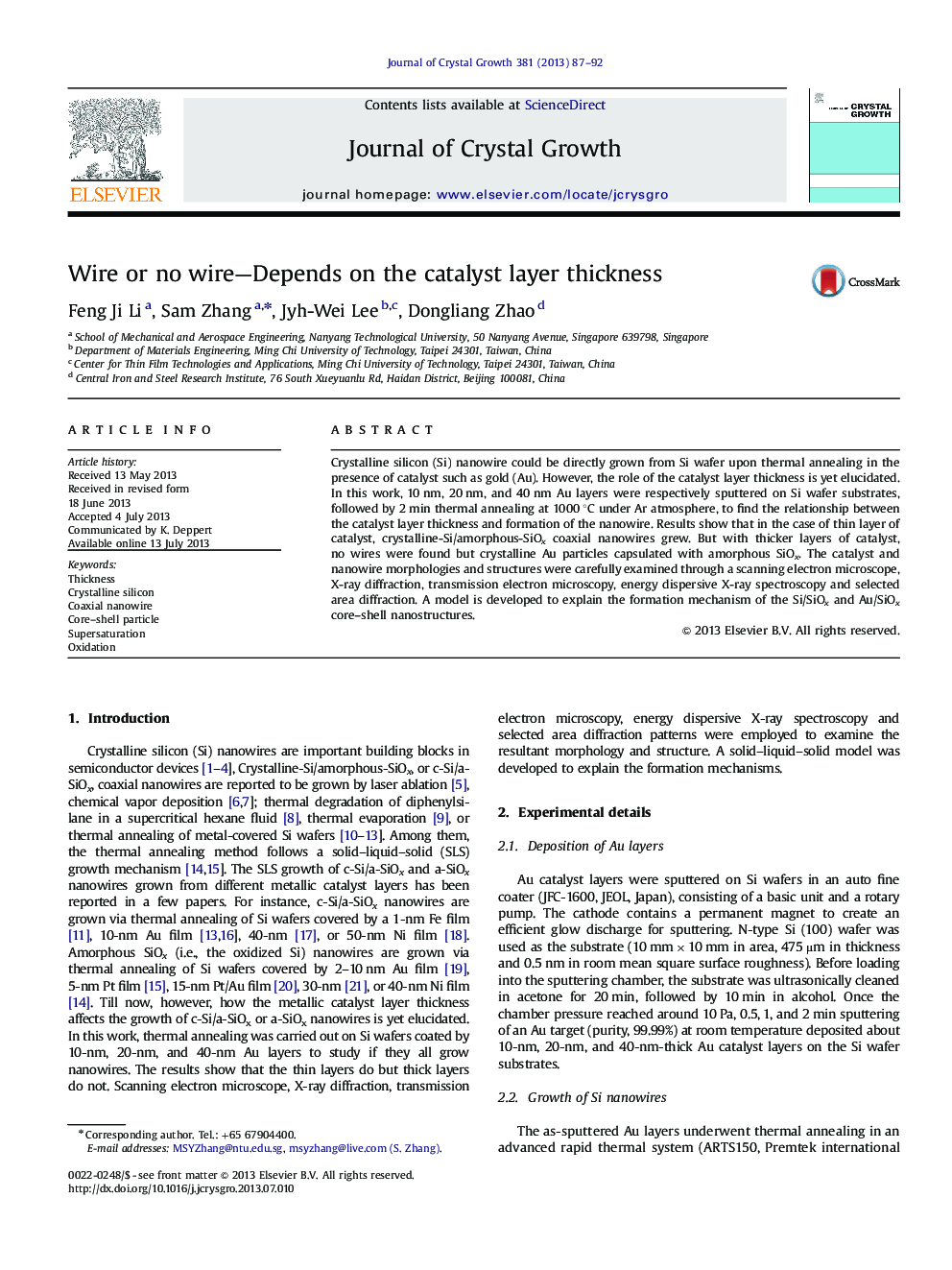| Article ID | Journal | Published Year | Pages | File Type |
|---|---|---|---|---|
| 8151981 | Journal of Crystal Growth | 2013 | 6 Pages |
Abstract
Crystalline silicon (Si) nanowire could be directly grown from Si wafer upon thermal annealing in the presence of catalyst such as gold (Au). However, the role of the catalyst layer thickness is yet elucidated. In this work, 10 nm, 20 nm, and 40 nm Au layers were respectively sputtered on Si wafer substrates, followed by 2 min thermal annealing at 1000 °C under Ar atmosphere, to find the relationship between the catalyst layer thickness and formation of the nanowire. Results show that in the case of thin layer of catalyst, crystalline-Si/amorphous-SiOx coaxial nanowires grew. But with thicker layers of catalyst, no wires were found but crystalline Au particles capsulated with amorphous SiOx. The catalyst and nanowire morphologies and structures were carefully examined through a scanning electron microscope, X-ray diffraction, transmission electron microscopy, energy dispersive X-ray spectroscopy and selected area diffraction. A model is developed to explain the formation mechanism of the Si/SiOx and Au/SiOx core-shell nanostructures.
Related Topics
Physical Sciences and Engineering
Physics and Astronomy
Condensed Matter Physics
Authors
Feng Ji Li, Sam Zhang, Jyh-Wei Lee, Dongliang Zhao,
